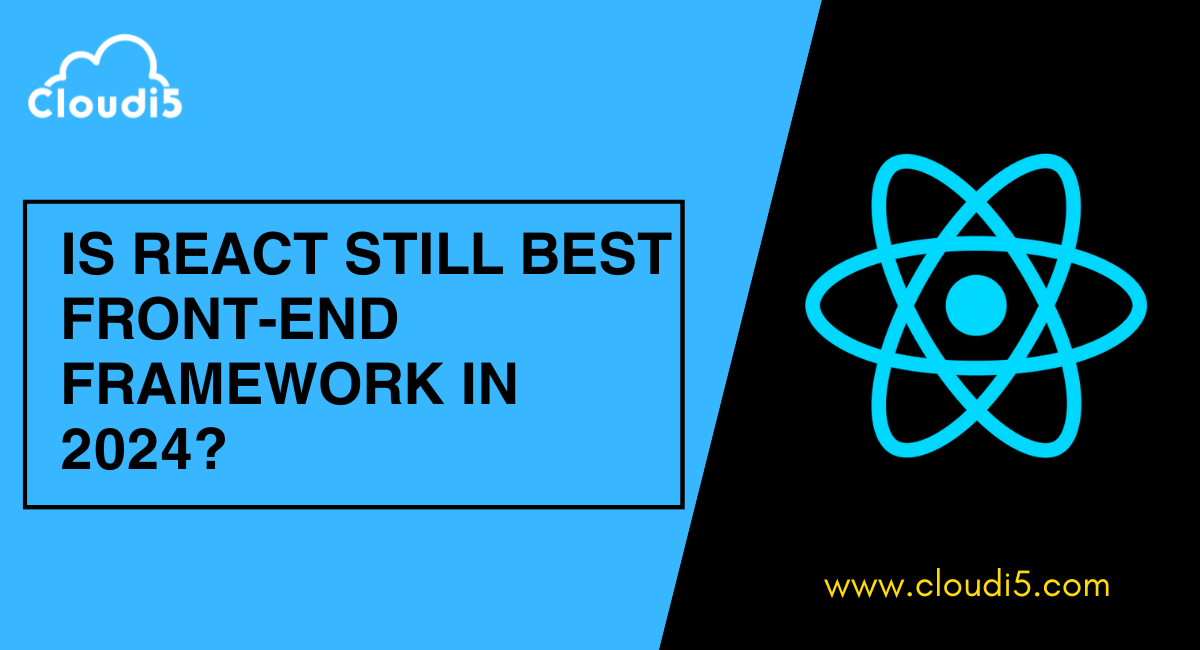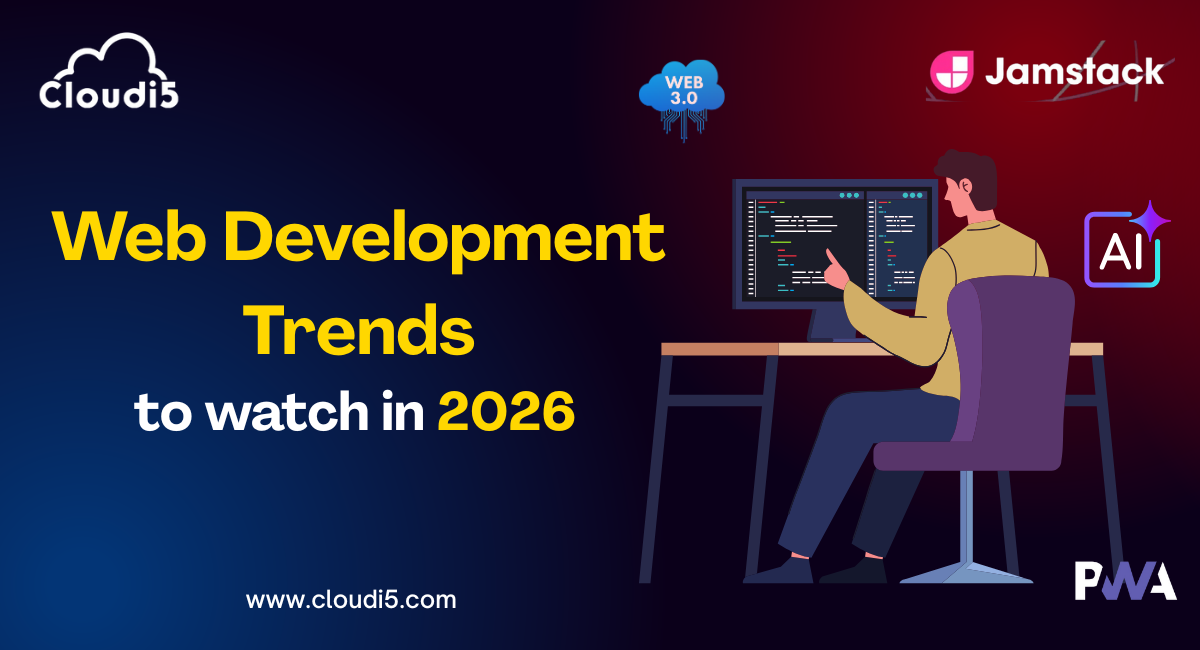
Is React Still The Best Front-End Framework In 2024?
Hey there! So, you know React, right? It's been like the boss of making websites cool. But guess what? In 2024, things are shaking up. New cool kids on the block, new frameworks. Now, everyone's wondering: Is React still the big boss?
In this blog, we're gonna check out what React is awesome at and where it might need a hand in 2024. We'll also meet the new framework buddies and see what's shaping up in the world of making websites look awesome.
So, grab a seat and let's chat. Is React still the big boss of making websites look amazing, or are there new cool bosses in town? Get ready to find out!
When it comes to building websites, selecting the right front-end framework is akin to choosing the perfect set of tools for constructing a masterpiece. Each framework comes with its unique features, advantages, and considerations, making the decision a pivotal one for developers.
Let's explore these frameworks, understand what makes React special, and check out some other popular options.
Frontend Frameworks
Frontend frameworks are like ready-made building blocks that make it quicker to build websites, just like using pre-made pieces to construct a complex structure. They give developers standard structures and tools, so they can focus on creating unique designs and features for each site.
When choosing a frontend framework, there are a few important things to think about:
- Learning Curve:
- How easy it is to understand and get good at using the framework.
- Performance:
- How well it can make websites that are fast and efficient.
- Flexibility and Scalability:
- If it can handle both simple websites and more complicated applications.
- Community and Resources:
- Whether there's a supportive community for help and ongoing learning.
Now, let's take a closer look at some popular frameworks, starting with React, the current favorite, and explore what makes it stand out.
1. React: The King of Components
Pros:
- Easy to learn, requiring only JavaScript skills.
- Performant, thanks to the optimization provided by the virtual DOM.
- Flexible, adapting seamlessly to diverse project needs.
- Massive community, offering abundant resources and support.
Cons:
- Steeper learning curve for complex features. might overcomplicate simple projects.
- Reliance on third-party libraries.
2. Vue.js: The Rising Star
Pros:
- Easiest to learn among popular frameworks.
- Lightweight and performant.
- Built-in features reduce reliance on external libraries.
Cons:
- Smaller community compared to React.
- May not be ideal for large-scale projects.
3. Angular: The Veteran Framework
Pros:
- Excellent for complex, data-driven applications.
- Structured development leading to maintainable code.
- Powerful tooling and IDE integration.
Cons:
- Steep learning curve due to complexity.
- Less flexible compared to React or Vue.
4. Svelte: The Newcomer with Promise
Pros:
- Blazing-fast performance due to pre-compilation.
- Smaller bundle sizes for faster loading.
- Simple and elegant syntax.
Cons:
- Emerging framework with a smaller community and resources.
- May not be suitable for all project types yet.
5. Next.js: Enhancing React's Capabilities
Pros:
- Improves SEO and initial load times.
- Easy integration with existing React projects.
- Focus on developer experience and tooling.
Cons:
- Adds complexity to a relatively simple framework.
- Requires understanding of both React and Next.js.
The State of React:
React is still a strong player in building the visual part of websites. It has a big group of people who use it, lots of extra tools you can add, and it keeps getting better with new features like React Server Components.
But there are other options like Vue and Svelte that are gaining popularity. This reminds us how important it is to choose the best tool for each project.
Emerging Trends: Front-End Development in 2024
In 2024, front-end development is moving towards exciting trends:
- Static Site Generation (SSG) and Server-Side Rendering (SSR): These boost SEO and performance, making websites faster and more discoverable.
- Headless CMS Integration: For flexible content management, allowing developers to design unique user experiences.
- Progressive Web Apps (PWAs): Offering app-like experiences on the web, enhancing user engagement.
- Low-code/No-code Tools: Making web development accessible to everyone, even those without extensive coding skills.
Ensuring fast performance is crucial. Techniques like code splitting, lazy loading, and caching are essential for delivering quick and smooth user experiences.
The Future of React:
React is a top player in web development, but what's next for it?
React's Ongoing Evolution: The React team is always adding cool features like Concurrent Mode and Suspense, changing how components work. React Server Components are set to boost performance and SEO, blurring the line between client and server-side rendering.
Community Strength: React's big strength is its huge and lively community. There are tons of libraries, frameworks like Next.js, and tools like Storybook for every need. This community vibe encourages collaboration, innovation, and easy solutions for all types of developers.
Challenges and Competitors: Yet, React faces challenges. Relying on third-party libraries can get complex and cause compatibility issues. Competitors like Vue.js and Svelte, with built-in features and smaller sizes, pose a real threat, especially for simpler projects.
Finding the Right Fit: Will React stay on top? It's a bit complex. For big, data-heavy apps, React's features and ecosystem are unmatched. But for smaller projects or those aiming for simplicity, Vue or Svelte might be more attractive.
Takeaway: The future isn't a game where one framework wins it all. Different frameworks suit different needs. React is solid, evolving, and has a huge community, but its future depends on adapting and catering to various project types and developer preferences.
Beyond Frameworks: Don't forget, the framework is just part of the picture. Following best practices like optimizing performance, writing clean code, and good team communication ensure success no matter your chosen tool.
So, React's future is bright, but keeping an eye on changes, experimenting with tools, and focusing on top-notch user experiences is the real key to success in any framework era.
Conclusion
React is still a top choice for building websites in 2024, but it's not the only game in town. Newer frameworks like Vue.js and Svelte are also getting popular.
The best framework for you depends on your project's needs. If you need a flexible and powerful framework with a big community, React is a great option. But if you're looking for something simpler and easier to learn, Vue.js or Svelte might be a better fit.
No matter which framework you choose, the important thing is to pick one that you're comfortable with and that will help you build great websites.
Congratulations! You've made it through the end of the blog, and now it's time for some information about us. If you're seeking top-notch web development services using the latest frameworks, look no further than Cloudi5 Technologies. We take pride in being the best web development company in Coimbatore, offering innovative solutions tailored to your project's unique needs. Let's create fantastic websites together.
Trusted By












Leave Comments